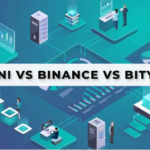Key Takeaways:
- Vitalik Buterin’s proposal explores the “multi-dimensional pricing” of transaction fees.
- Through multilayered EIP-1559, Buterin’s proposal could reduce the cost of Ethereum gas.
- The community’s main complaint about multi-dimensional pricing was that it would raise the packing block threshold and aggravate miners’ centralization concerns. V God considers that the concerns raised by these issues have been considered resolved as a result of MEV and EIP1559.

Vitalik Buterin proposes multidimensional pricing to remedy high gas fees in EIP-1559. Over 1.36 million ETH tokens have been removed from circulation since the burn, boosting the altcoin’s bullish narrative. He proposed that “multidimensional pricing of transaction fees” be investigated. According to the article, several restrictions exist in EVM for various resources, including EVM consumption, block data, Witness data, and State size.
Basically, EIP-1559 eliminates the first-price auction as the primary method of calculating gas fees. People offer a specific amount of money to pay for their transaction to be processed in first-price auctions, and the highest bidder wins. Instead, there will be a distinct “base fee” for transactions included in the next block with EIP-1559. In addition, users or applications who want their transaction to be prioritized can pay a “tip,” also known as a “priority fee,” to a miner in exchange for faster inclusion.
The solution replicates “gas” with “Ethereum” and lowers transaction costs. For dealing with multidimensional EIP-1559, Buterin has offered two centralized and decentralized solutions.
The current system, in which all resources are integrated into a single multidimensional resource (“gas”), fails to account for these distinctions. For example, transaction and call data consume about 3% of the gas in a block on average. As a result, a worst-case block has 67 times the data of an average-case block (including the 2x slack from EIP 1559). Witness size is similar: average-case witnesses are only a few hundred kB, while worst-case witnesses would be a few megabytes in size, a 10-20x increase, even with Verkle gas revisions 17.
In an interview with Bankless, the Ethereum Network’s founder stated that altcoin is halfway to fulfilling its “Grand Vision.”
According to IntoTheBlock, the altcoin’s issuance yesterday, January 5, 2022, was the lowest in almost a month, at 1,350.
Mark Cullen, a crypto analyst and trader, has assessed the Ethereum price trend and forecasts that the altcoin will rise above $4400 shortly.
Objections to Multidimensional Pricing and the Knapsack Problem
The main significant argument to multidimensional pricing models has been that they enforce a challenging optimization problem on block builders.
Block builders would have to balance between different dimensions and solve a multidimensional knapsack problem 23 instead of simply accepting transactions in high-to-low order of fee-per-gas. This would open the door for proprietary specialized miners to outperform stock algorithms, resulting in centralization.
In two essential aspects, this problem is substantially weaker than before:
-Miner extractable value (MEV) already provides chances for optimized miners. Therefore stock algorithms are no longer optimal in any meaningful way. Proposer/builder separation (PBS) 8 tackles this issue by separating block production economies of scale from the consensus layer.
-Since every resource reaching its limit is an edge case rather than an average situation, naive algorithms will only underperform in a few rare blocks, according to EIP 1559.
Many resources in the EVM have quite a diverse burst capacity (the amount of capacity they could handle for one or a few blocks) and sustained capacity restrictions (how much capacity they would be comfortable having for a long time). EVM usage, Block data, and Witness data are all examples.
When all resources are crammed into a single virtual resource (gas), the worst-case / average-case ratio is forced to be based on usage, resulting in meagre gas prices when the usage-based ratio and the ratio of burst and sustained limits that we know clients can bear are very out of sync.









